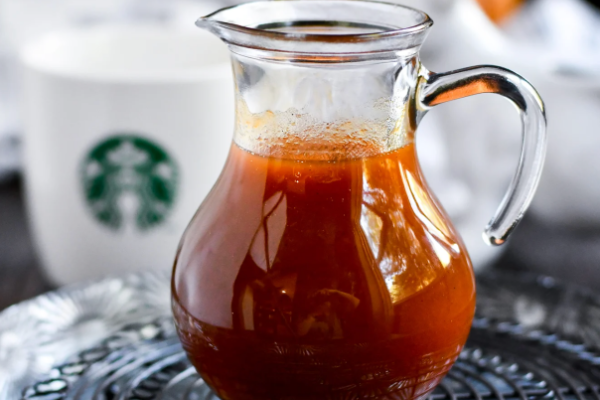Gordon Ramsay Perfect Steak Method
The Gordon Ramsay Perfect Steak Method
Our family loves this simple and flavorful method to make the Gordon Ramsay Perfect Steak! It’s perfect for a special dinner at home or entertaining. Although these steaks are made in a frying pan, you could easily adjust this recipe for cooking on the grill.
Gordon Ramsay, the renowned culinary maestro, has a steak recipe that’s become legendary for its succulence and flavor. If you’ve ever dreamed of creating a steak that rivals the best steakhouses, you’re in for a treat.
In this blog post, we’ll walk you through Gordon Ramsay’s perfect steak recipe step-by-step and share essential tips to ensure your next homemade steak dinner is a resounding success.
Step-by-Step Instructions for the Gordon Ramsay Perfect Steak Method:
- Preparation: Start by taking your steak out of the refrigerator and allowing it to come to room temperature for about 30 minutes. This ensures even cooking.
- Seasoning: Generously season the steak with salt and freshly ground black pepper on both sides. This step is crucial for enhancing the steak’s natural flavors.
- Pan Preheating: Heat a heavy skillet or a grill pan over high heat. You want the pan to be extremely hot.
- Cooking the Steak: Add a drizzle of olive oil to the pan, then carefully place the steak in the pan. Allow it to sear without moving it for a couple of minutes. Flip the steak and sear the other side.
- Butter and Aromatics: Add a few knobs of unsalted butter to the pan, along with smashed garlic cloves (if desired). Tilt the pan and use a spoon to baste the steak with the melted butter. This step imparts fantastic flavor and keeps the steak moist.
- Resting: Once the steak reaches your desired level of doneness (use a meat thermometer for precision), remove it from the pan and let it rest for a few minutes before slicing. This allows the juices to redistribute, ensuring a juicy steak.
More Gordon Ramsay Recipes
Gordon Says: “If you follow these simple rules, it’s going to be easy. Let the pan get nice and hot. If there’s no heat inside the pan, there’s no color. If there’s no color, there’s no flavor. Make sure the steak is relaxed, meaning it’s at room temperature. A relaxed steak will cook quicker, and won’t be stone cold inside the center.”
Ingredients:
- High-quality steak (Ribeye or Filet Mignon are excellent choices)
- Salt and pepper
- Olive oil
- Unsalted butter
- Garlic cloves (optional, for extra flavor)
- Fresh Thyme
Frequently Asked Questions
Why is it important to let the steak come to room temperature before cooking, as per Gordon Ramsay’s recipe?
- Even Cooking: A steak that’s at room temperature will cook more evenly. If you cook a cold steak straight from the refrigerator, the center will remain colder than the outer layers, leading to uneven cooking. By allowing the steak to warm up to room temperature, you ensure that the entire cut cooks consistently.
- Faster Cooking: A room temperature steak will cook more quickly than a cold one. When the steak is cold, it takes longer for the center to reach the desired level of doneness. Letting it warm up slightly reduces the time needed for cooking, which helps prevent overcooking the exterior while waiting for the center to cook.
- Better Searing: Searing a steak is essential for creating a flavorful crust on the outside. When the steak is at room temperature, it sears more effectively. A cold steak added to a hot pan can cool down the pan temperature, making it harder to achieve a proper sear.
- Tenderness: Allowing the steak to come to room temperature helps relax the muscle fibers. This makes the meat more tender and less likely to become tough during the cooking process.
- Juiciness: Starting with a warmer steak helps retain more of its natural juices. If you cook a cold steak, the temperature difference between the exterior and the center can cause the juices to rush to the center, leaving the outer layers drier.

Why is it necessary to let the steak rest before slicing?
- Juice Redistribution: When a steak is cooked, the heat causes the juices inside the meat to move towards the center. If you cut into the steak immediately after cooking, these flavorful juices will flow out, leaving the steak drier. Allowing the steak to rest gives these juices time to redistribute throughout the meat, resulting in a juicier and more succulent steak when you finally slice it.
- Tenderness: Resting the steak allows the muscle fibers to relax. Cooking causes the proteins in the meat to contract, which can make the steak feel tense and tough. Resting gives the fibers a chance to reabsorb some of the moisture and relax, making the steak more tender when you eat it.
- Flavor Development: As the steak rests, the flavors within the meat have time to settle and meld. This short resting period can enhance the overall taste of the steak, making it more flavorful and enjoyable.
- Temperature Equalization: Resting the steak helps even out the internal temperature. When you cook a steak, the outer layers are hotter than the center. Resting allows the heat to distribute more evenly throughout the steak, so the temperature difference between the exterior and interior is minimized, leading to a better overall eating experience.
What role does butter play in cooking a steak?
- Flavor Enhancement: Butter is known for its rich, creamy, and slightly nutty flavor. When used in cooking a steak, it adds an extra layer of deliciousness to the meat. The combination of the steak’s juices, seasonings, and the buttery baste creates a mouthwatering taste that elevates the overall flavor profile of the dish.
- Moisture and Juiciness: Butter adds moisture to the steak, which is especially important in methods where the steak is cooked at high temperatures, like searing. As the butter melts, it coats the steak, helping to prevent excessive drying out, particularly on the surface. The result is a steak that’s more succulent and less likely to become tough.
- Searing Aid: When butter is used in combination with oil (such as olive oil), it can help with the searing process. The butter contributes to a beautiful brown crust, often called the Maillard reaction, which enhances the appearance, texture, and flavor of the steak.
- Aromatics: Many recipes suggest adding aromatics like garlic and herbs to the butter while cooking the steak. As the butter melts and infuses with these flavors, it imparts a fragrant and enticing aroma to the steak, making it even more appetizing.
- Basting: Basting is a technique where you spoon melted butter (and often other flavorings) over the steak as it cooks. This not only imparts flavor but also helps keep the steak moist and distributes the buttery goodness evenly.
- Finishing Touch: Adding a small pat of butter to the steak after it’s removed from the heat (called “mounting” with butter) can add a luscious final touch. The residual heat melts the butter, creating a glossy coating that adds richness and enhances the overall presentation.
Quick Tips for in Making the Gordon Ramsay Perfect Steak:
- Choose Quality: Start with a high-quality cut of meat. Invest in well-marbled steaks for the best flavor and tenderness.
- Room Temperature: Allow the steak to come to room temperature before cooking. This ensures even cooking and better results.
- Season Liberally: Don’t skimp on the salt and pepper. Proper seasoning is key to enhancing the steak’s natural flavors.
- Hot Pan: Ensure your pan is super hot before placing the steak in it. This creates a fantastic sear and locks in the juices.
- Butter Basting: The buttery basting not only adds flavor but also helps keep the steak moist. Be generous with it.
- Resting Time: Give your steak a few minutes to rest before slicing. This step is essential for juicy, succulent results.

Gordon Ramsay's Perfect Steak
In this recipe, we'll walk you through Gordon Ramsay's perfect steak recipe step by step and share essential tips to ensure your next homemade steak dinner is a resounding success.
Ingredients
- Ribeye (or really any cut of steak)
- Large grain sea salt
- Ground pepper
- 1-2 Tbsp olive oil
- Fresh garlic slight crushed
- Fresh thyme
- 2 Tbsp butter
Instructions
- Remove steaks from fridge and let sit room temperature for 20 minutes
- Put a pan over medium-high heat on the stovetop
- Season thawed steaks generously with salt and pepper and rub the bottom of the steaks into excess salt and pepper on table
- When pan begins to show any signs of smoke, place olive oil in pan and make sure pan is coated and well covered
- Lay steaks away from you and flip every minute including rendering the fatback side
- Add the crushed garlic, fresh thyme, and another Tbsp of olive oil in the pan around the cooking steaks
- Add the butter and baste the steaks while continually flipping steaks on the minute
- Remove the steaks when they reach your desired tenderness (cheek = rare, chin = medium, forehead = well done) and let rest for 5-10 minutes.
- I enjoy my steaks medium and it took 10 total minutes for the steaks to be ready as pictured!
Nutrition Information:
Yield: 2 Serving Size: 1Amount Per Serving: Calories: 342Total Fat: 33gSaturated Fat: 13gTrans Fat: 0gUnsaturated Fat: 19gCholesterol: 64mgSodium: 407mgCarbohydrates: 1gFiber: 0gSugar: 0gProtein: 11g






















